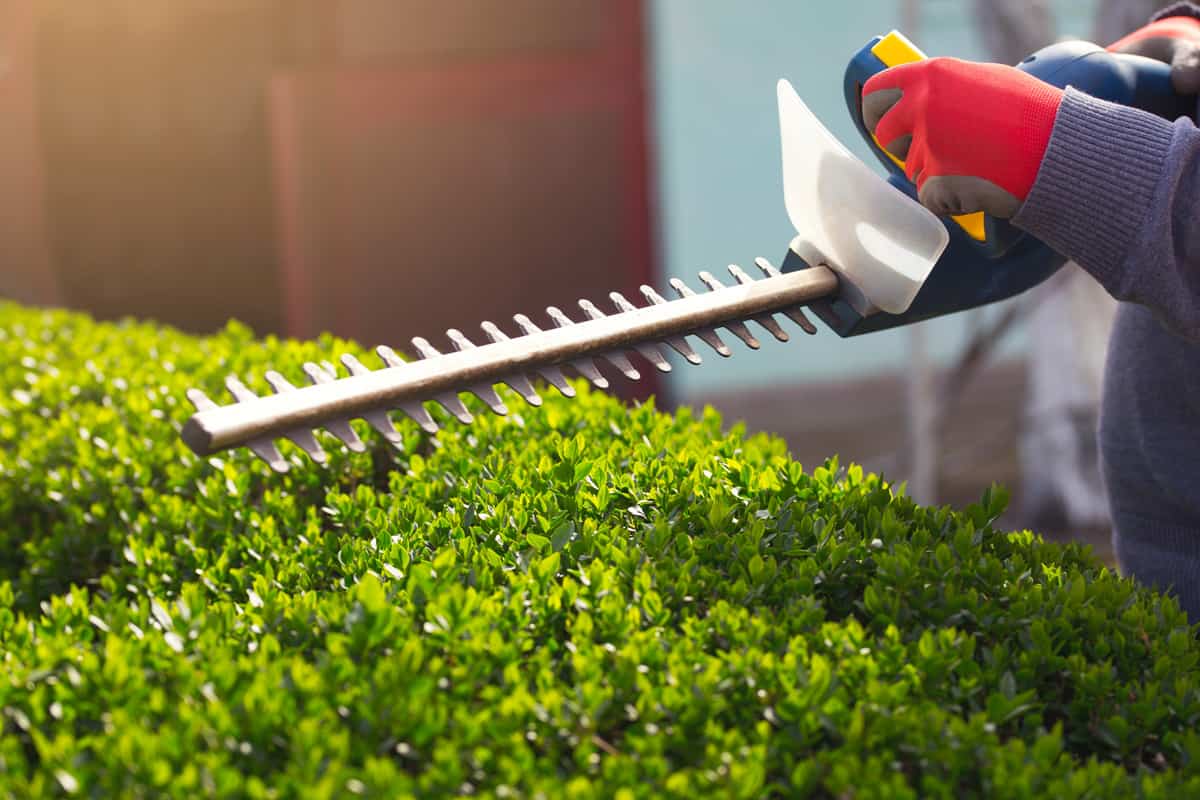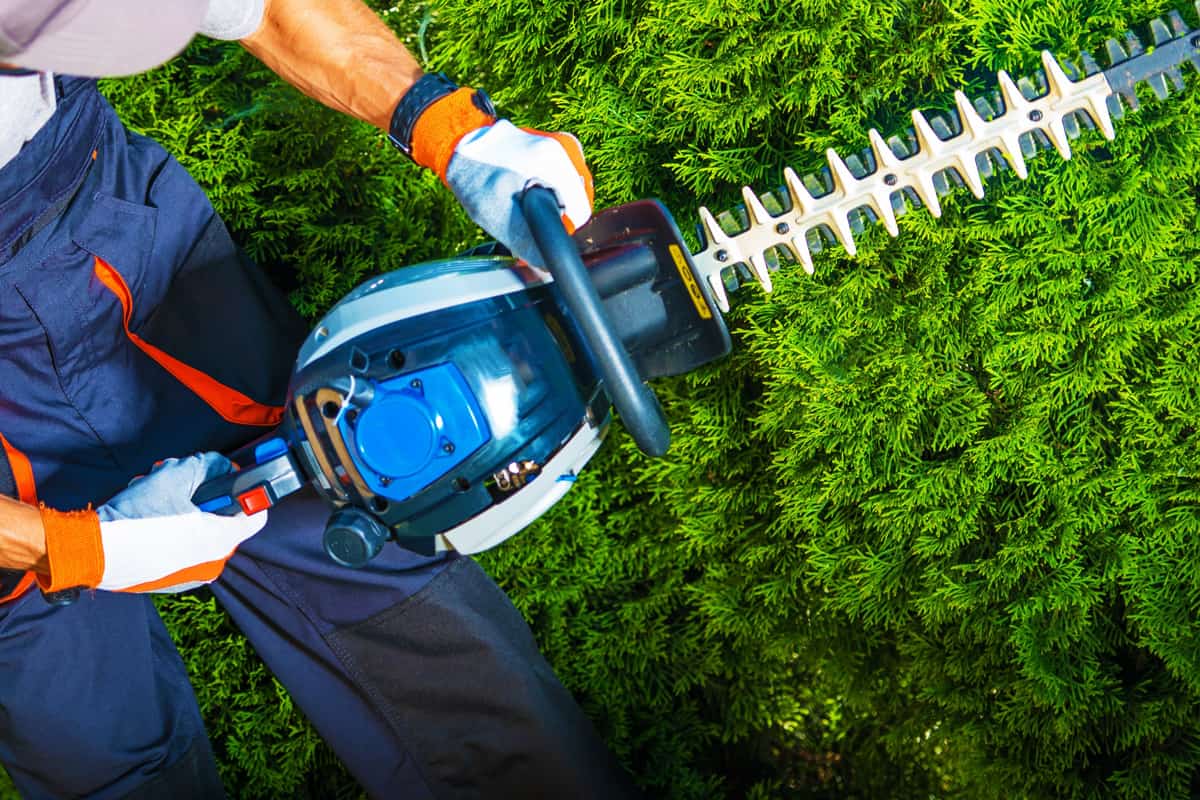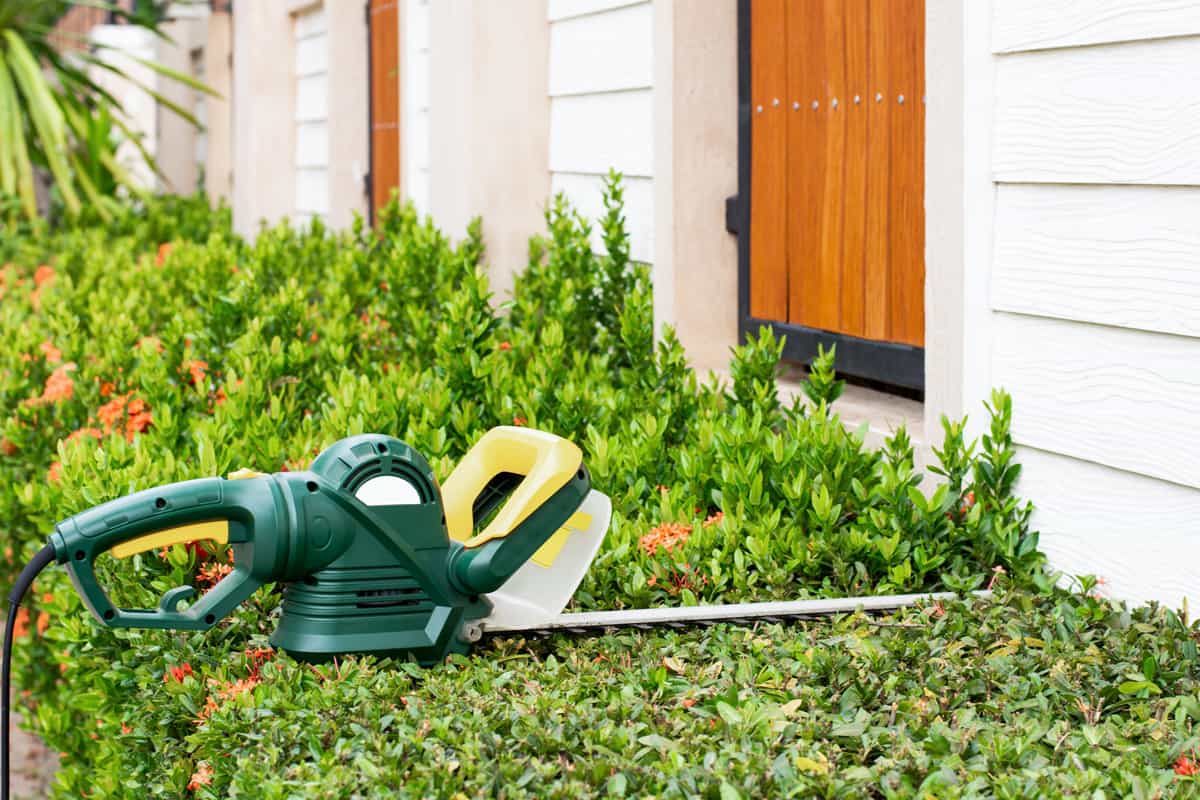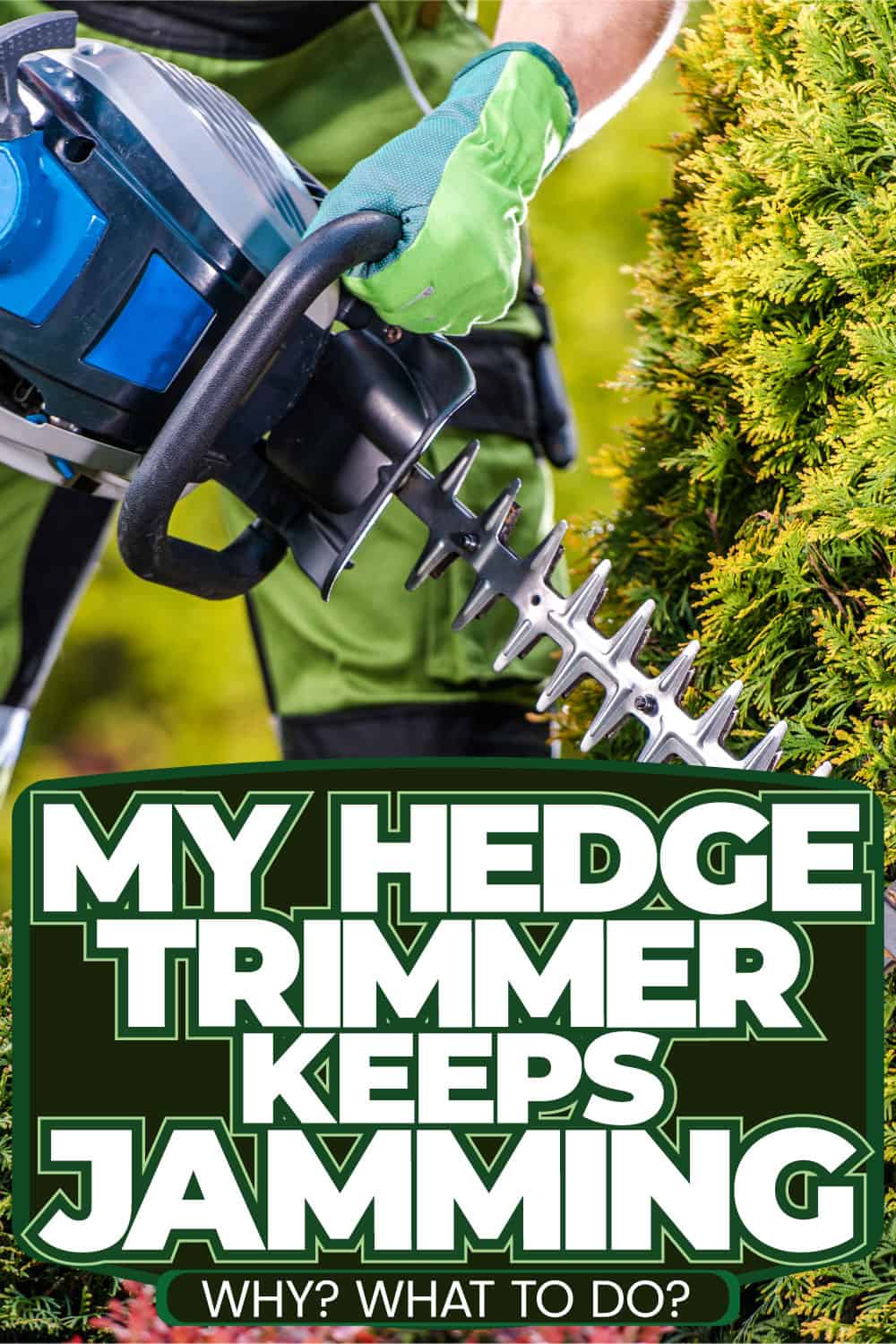Hedge trimmers make your garden look extra neat without using much effort. But what if you find yourself with a jammed hedge trimmer? Is it time to take it to a professional? We did the research and found the answer to your questions!
Debris and rocks stuck inside the blades are one of the reasons why your hedge trimmer is jamming. This happens when you overwork your hedge trimmer more than it can allow. This buildup will eventually lead to your blades becoming dull and less functional.
The probability of your hedge trimmer jamming or being stuck is very likely. And there are ways to get around this problem. You'd be surprised that you can fix it yourself. If you want to learn more about the process, read below!
Why Is My Hedge Trimmer Jamming?

Generally, hedge trimmers are meant to trim bushes and shrubs lightly. And it's not meant for anything heavy-duty. It's also important to know that your hedge trimmer needs to rest from time to time.
Anything more than what it can take will cause it to malfunction. While yes, the likelihood of your hedge trimmer jamming is very high, preventing that is still important.
Whether electrical or petrol powered, your hedge trimmer may start jamming if it's overused or improperly used.
If you use it continuously to trim shrubs or bushes without monitoring its blades or condition, debris and rocks may collect in the blades causing the malfunction.
Frequently using your hedge trimmers may cause some wear and tear. The blades could end up being dull if not maintained properly.
How Do You Fix A Jammed Hedge Trimmer?

Hedge trimmers can be fixed at home. All you need to do is follow the proper guidelines and materials, which can be easily found on your lawn.
You will need the following materials to fix your jammed hedge trimmer:
- Gloves
- Pruning shears
- Wooden dowel
1. Identify The Problem
First, place your hedge trimmer on a flat surface and examine the blades to identify the problem. But before doing so, make sure to unplug your electric hedge trimmer.
With a petrol-powered hedge trimmer, unplug the spark plug. This ensures that your hedge trimmer doesn't turn on by accident.
2. Remove The Debris
If branches, rocks, or debris are stuck in the hedge trimmer's blades, you need to eliminate them.
With a gloved hand, remove the debris stuck in the blade using pruning shears. This will ensure that the debris stuck inside will be broken down into manageable pieces that can be removed.
Once you're done cutting the debris into smaller pieces, use a wooden dowel to push debris stuck between each blade. Make sure to do this with gloved hands.
While at it, you may also check for any broken or bent blade. A broken blade may also cause your hedge trimmer to jam. You don't need to buy a new hedge trimmer for this problem.
Buy a new set of blades to replace the damaged ones.
Check out these pruning shears on Amazon.
3. Removing Damaged Blades
To replace the broken blades, detach the housing to be able to remove the screws and bolts that secure the old blades.
Before removing, take a good look at the position of the blades; you need to remember this to attach the new blades properly.
Afterward, screw in the new blades. They should be running again after this.
Here's a simple video tutorial you can follow:
Tips To Prevent Your Hedge Trimmers From Jamming

To prevent your hedge trimmer from jamming or malfunctioning, it's better to take a proactive routine rather than wait until it jams.
The following guideline will help you better understand how to take preventive measures for your hedge trimmer.
1. Sharpen Your Blades
Like a kitchen knife, for example, the blades on your hedge trimmer require some sharpening now and then.
By doing so, cutting through weeds and shrubs will require less cutting power. That's great if you want to lessen the chances of jamming hedge trimmers.
It's best to use a drill equipped with a cone-shaped file, but a flat file can also do the trick. You must sharpen your blades after 50 hours of usage.
2. Regularly Clean The Cutting Blades
With regular usage of hedge trimmers, sap may collect and build upon its blades. When this happens, your blades will be less efficient and dull.
The sap buildup may cause your hedge trimmer to overheat because of the added friction.
To prevent this from happening, clean your blades after using the hedge trimmer. Wipe them with a rag soaked in soapy water. Let the blades dry before storing.
If the sap makes the blades sticky, use a resin remover to eliminate the stickiness.
3. Regularly Lubricate The Blades
The blades of your hedge trimmer are exposed to moisture and contaminants more frequently the more you use it. Erosion can build up quickly.
By regularly lubricating your blades every month, you'll be able to lessen the chances of your blades being damaged since it makes the blade run smoothly and reduces the need for more cutting pressure.


Check out this blade lube on Amazon
4. Clear Out The Air Filter
The motor of your hedge trimmer is prone to the buildup of debris. Additionally, the motor needs good air circulation going on to function properly.
When it's not regularly cleaned, debris might collect and get trapped in the air filter—causing your hedge trimmer to malfunction as it will require double the effort to work.
To clean your air filter, follow the manual instructions on how to release it. You wouldn't want to wash off the dirt without knowing if it's allowed by the manufacturer.
Blow/brush off any dirt or dust on the air filter. If you can't remove the debris, you can always replace it.
5. Tighten Loose Screws and Bolts
After some use, your hedge trimmer's bolts might end up a bit lost. And this is a normal thing for most trimmers.
It's essential to check for any loose screws, bolts regularly, and connectors to avoid any damage. Using a hedge trimmer is also dangerous if you don't know whether or not the screws are tight.
For your protection and the hedge trimmers, make it a habit to check for loose fittings. Also, do not over-tighten the screws, as it can also lead to damage.
6. Proper Storage
Believe it or not, storing your hedge trimmer plays a massive role in keeping it functional. Typically, equipment like hedge trimmers is made of metal, and it's important to keep them out of damp areas.
Ensure that your shed doesn't leak. Otherwise, the moisture will corrode the metal parts of the trimmer, including the blades. Therefore you want to store your hedge trimmer in a dry area.
Make sure to wrap your tools in a towel or a plastic bag.
Can You Use A Hedge Trimmer On Weeds?

Yes, you can cut weeds using a hedge trimmer. But it's not best to do so. Hedge trimmers are designed to trim bushes and shrubs at a certain height.
Weeds from the ground will be hard for hedge trimmers to trim off. It's also going to be time-consuming and uncomfortable.
Is A Hedge Trimmer And A Hedge Cutter The Same?

Hedge trimmers are mainly used to trim and shape bushes. It's a lightweight tool meant for light activities.
Hedge cutters are meant for more heavy-duty stuff, such as cutting branches and thicker bushes. So, no, the two aren't the same.
To learn more about shaping your bushes, read this post, "How To Shape Bushes With Hedge Trimmer."
To Wrap It Up
Hedge trimmers are a lifesaver in keeping your shrubs and bushes looking perfect. But over time, it may collect debris and small twigs, making them dull and malfunction. However, don't wait for this to happen to your hedge trimmer!
Take preventive measures to keep your hedge trimmer functional. Clean the blades regularly, lubricate once a month, clean the air filter, and properly store your equipment.
Remember to take care of your equipment so it can last long in your garden!


